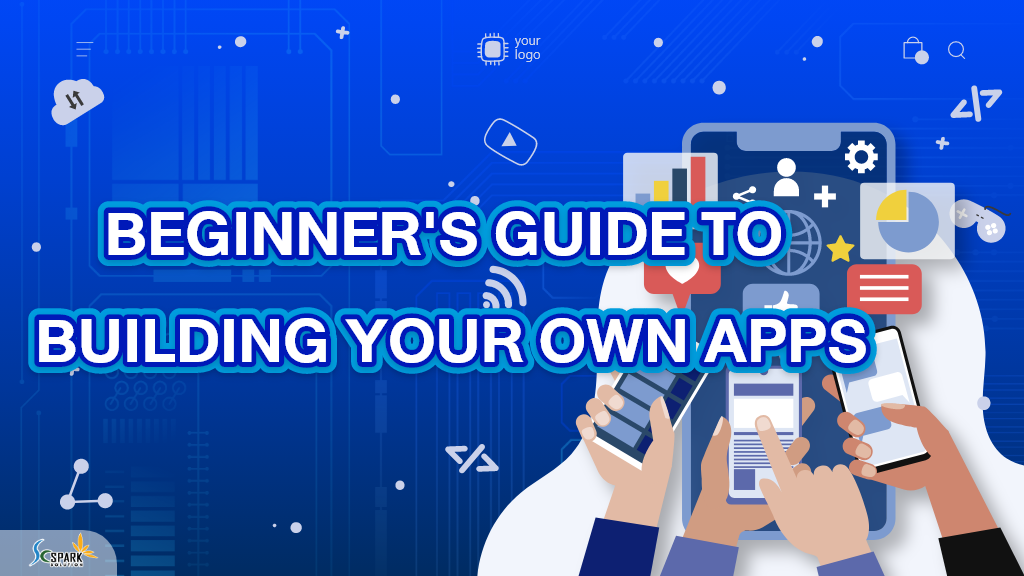A Beginner’s Guide to Making Your Own App
In today’s digital age, apps have become an integral part of our lives, catering to our various needs and interests. Whether you have a brilliant idea for a mobile application or want to learn more about the fascinating world of app development, creating your own app can be an exciting and rewarding endeavor. While the process may seem daunting at first, this guide will walk you through the essential steps to transform your app concept into a reality.
1. Define Your App Idea:
Every successful app starts with a well-defined idea. Begin by identifying the problem your app will solve or the need it will fulfill. Conduct thorough market research to understand your target audience, analyze competitors, and validate the demand for your app. Refine your concept and envision its key features and functionalities.
2. Plan Your App’s Architecture:
Once you have a clear idea, it’s crucial to plan the architecture of your app. Create a wireframe or a storyboard to visualize the user interface (UI) and user experience (UX) of your app. This step will help you identify the necessary screens, navigation flow, and interactions required for your app.
3. Choose the Right Development Approach:
Deciding on the development approach is a crucial step in app creation. Two popular options are native and hybrid app development:
3.1 Native App Development: This approach involves developing separate versions of your app for different platforms, such as iOS (using Swift or Objective-C) and Android (using Java or Kotlin). Native apps offer superior performance and access to device-specific features but require separate development efforts.
3.2 Hybrid App Development: Hybrid apps are built using web technologies like HTML, CSS, and JavaScript, and then wrapped in a native container. This approach allows you to create a single codebase that can run on multiple platforms, reducing development time and effort. Popular frameworks like React Native and Flutter enable hybrid app development.
4. Learn App Development or Collaborate:
If you’re keen on learning app development, there are numerous online resources, tutorials, and courses available to help you get started. Learning programming languages like Java, Swift, Kotlin, or JavaScript can provide a solid foundation for building your app. Alternatively, you can collaborate with experienced developers or consider hiring professionals to bring your app to life.
5. Build and Test Your App:
With the development approach chosen, it’s time to start building your app. Break down the development process into smaller tasks and set achievable milestones. Begin by creating the basic UI components and gradually implement the core features. Regularly test your app to ensure it functions as intended, fixing bugs and refining the user experience along the way.
6. Integrate APIs and Backend Services:
To enhance your app’s functionality, you might need to integrate Application Programming Interfaces (APIs) and backend services. APIs allow your app to communicate with external services such as social media platforms, payment gateways, or mapping services. Ensure you thoroughly research and select reliable APIs that align with your app’s requirements.
7. Polish Your App and Prepare for Launch:
Once your app is developed and tested, allocate time to refine the UI, optimize performance, and address any remaining bugs. Conduct thorough testing across different devices and operating systems to ensure compatibility. It’s also essential to create engaging app store descriptions, screenshots, and promotional materials to generate interest in your app.
8. Publish and Promote Your App:
When you’re confident in your app’s quality, it’s time to publish it on the relevant app stores, such as the Apple App Store and Google Play Store. Follow the respective guidelines and procedures to submit your app for review. Simultaneously, implement marketing strategies to promote your app, such as social media campaigns, content marketing, and influencer collaborations.
9. Gather User Feedback and Iterate:
Once your app is live, actively seek feedback from your users. Encourage them to provide reviews and ratings, and listen attentively to their suggestions and concerns. This valuable feedback will help you identify areas for improvement and prioritize future updates. Continuously iterate and release updates to address bugs, add new features, and enhance the overall user experience. Engaging with your users fosters a loyal user base and improves your app’s long-term success.
10. Monitor Analytics and Performance:
Utilize analytics tools to gather data on user engagement, retention, and behavior within your app. This data will provide insights into how users interact with your app and highlight areas that require optimization. Monitor key performance indicators (KPIs) such as app downloads, active users, and conversion rates to assess your app’s success and make informed decisions for future enhancements.
11. Monetize Your App:
If your goal is to generate revenue from your app, explore different monetization strategies. Common approaches include:
11.1 In-App Purchases: Offer users additional features, premium content, or virtual goods through in-app purchases.
11.2 Advertising: Incorporate advertisements within your app, either through banners, interstitial ads, or native ads. Ensure the ads are relevant and non-intrusive to maintain a positive user experience.
11.3 Subscriptions: Implement a subscription model, providing users with access to exclusive content or advanced features for a recurring fee.
11.4 Freemium: Offer a basic version of your app for free, with limited features, and provide an upgraded version for a one-time or recurring fee.
12. Stay Updated with Technology Trends:
The app development landscape is continuously evolving, with new technologies, frameworks, and trends emerging regularly. Stay updated with the latest advancements and industry best practices to ensure your app remains relevant and competitive. Engage with developer communities, attend conferences, and participate in online forums to learn from fellow developers and share knowledge.
Conclusion:
Creating your own app can be a fulfilling and challenging journey. By defining a clear app idea, planning its architecture, choosing the right development approach, and iterating based on user feedback, you can transform your concept into a fully functional app. Embrace the learning process, be adaptable, and stay committed to delivering a high-quality user experience. With dedication and perseverance, your app has the potential to make a positive impact and succeed in the ever-expanding world of mobile applications.
For those of you who want to make an E-Commerce app, a shopping app or a Delivery app, we recommend SC-Spark Solution, an app making company. experienced With direct experience from Silicon Valley, being a company that develops more than 100 applications around the world, both custom and ready-made for you to choose from. If anyone is interested in making mobile applications or websites, you can contact here
Contact us at
Facebook : SC-Spark Solution บริการทำแอปพลิเคชั่น
“Nothing is impossible”







